Bauhinia tree
Scientific name: Bauhinia variegata
POWO Status: Shrub or Tree
IUCN Red List threat level: Least Concern
Common names: Orchid Tree, Butterfly Tree
GPS Location: 17° 42′ 57.67″ N, 64° 49′ 46.30″ W
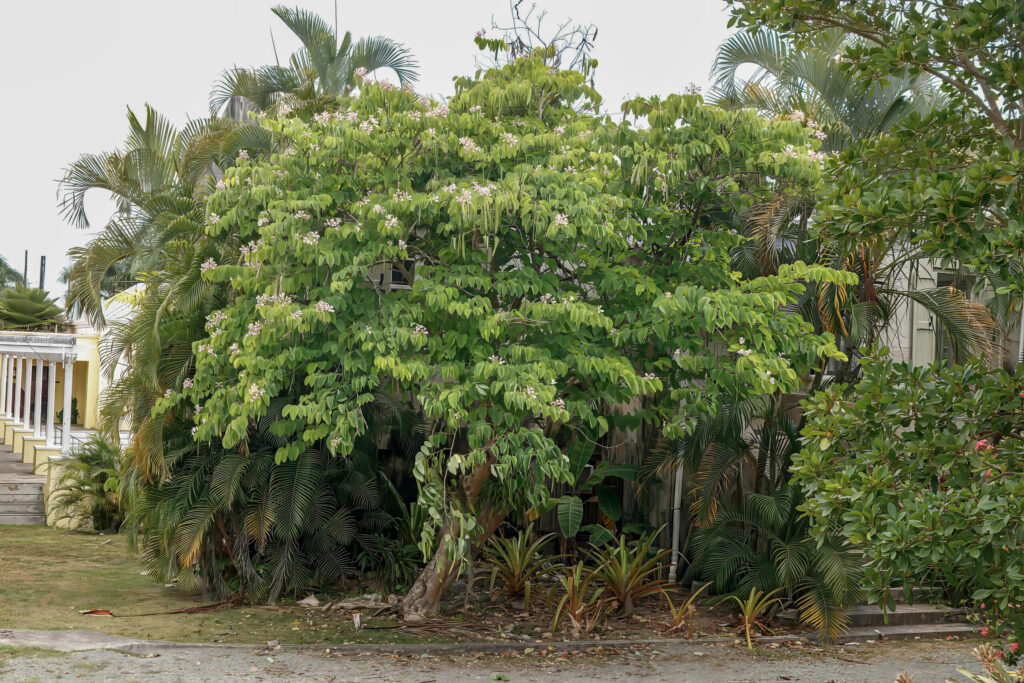
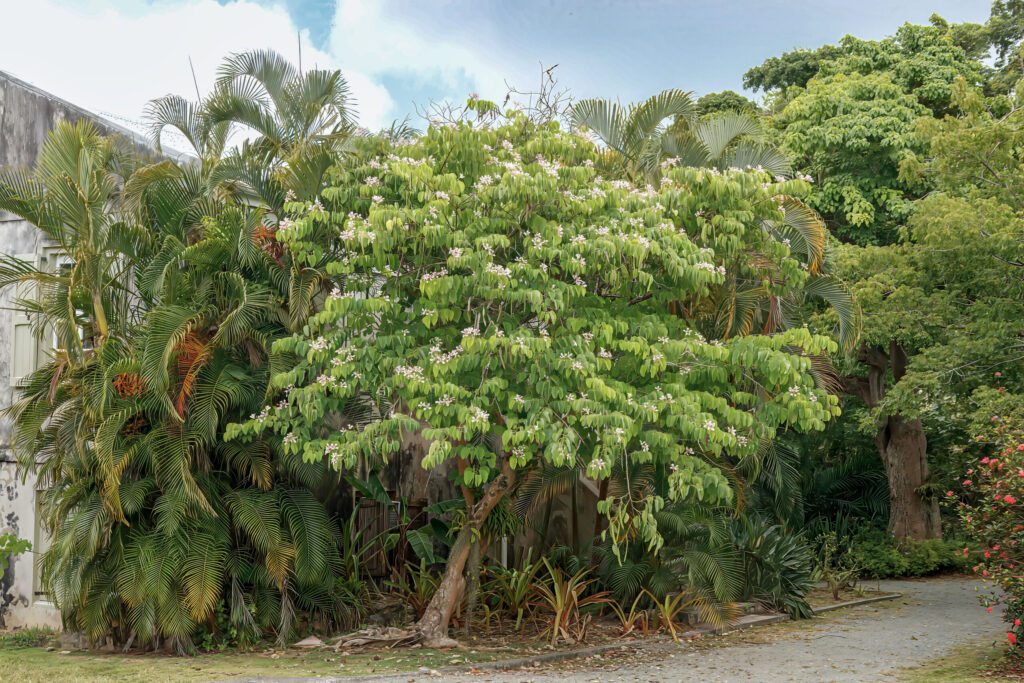
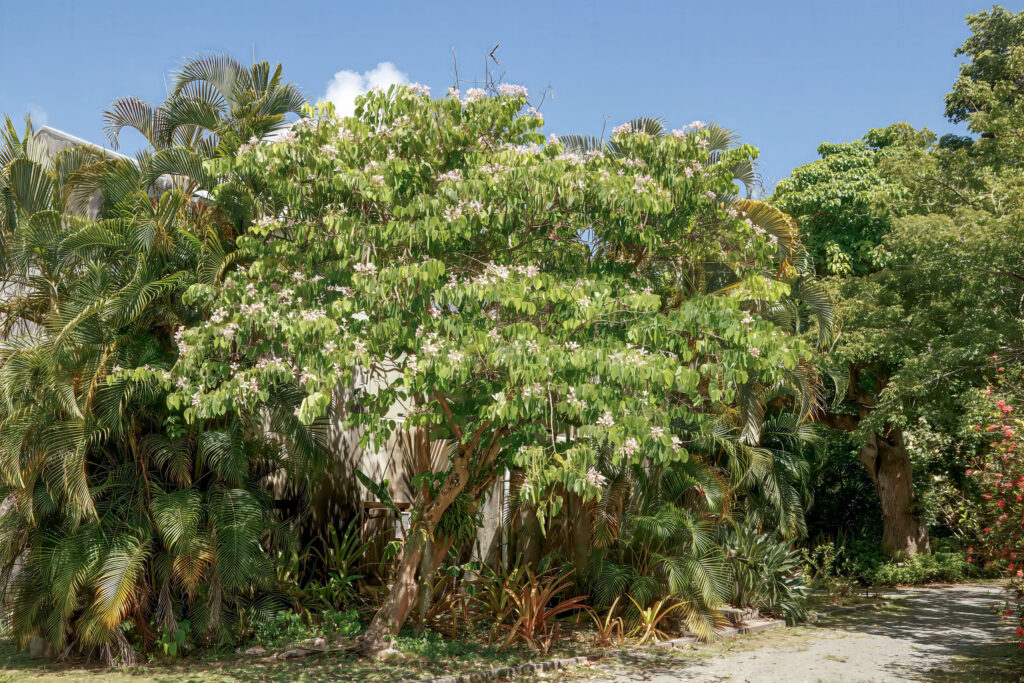











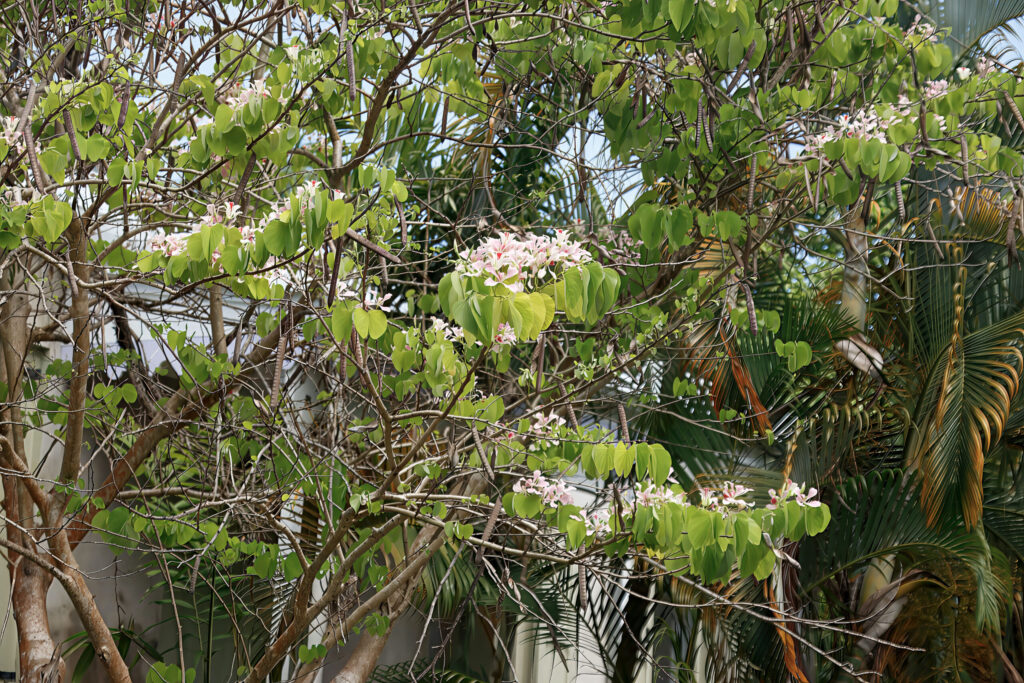







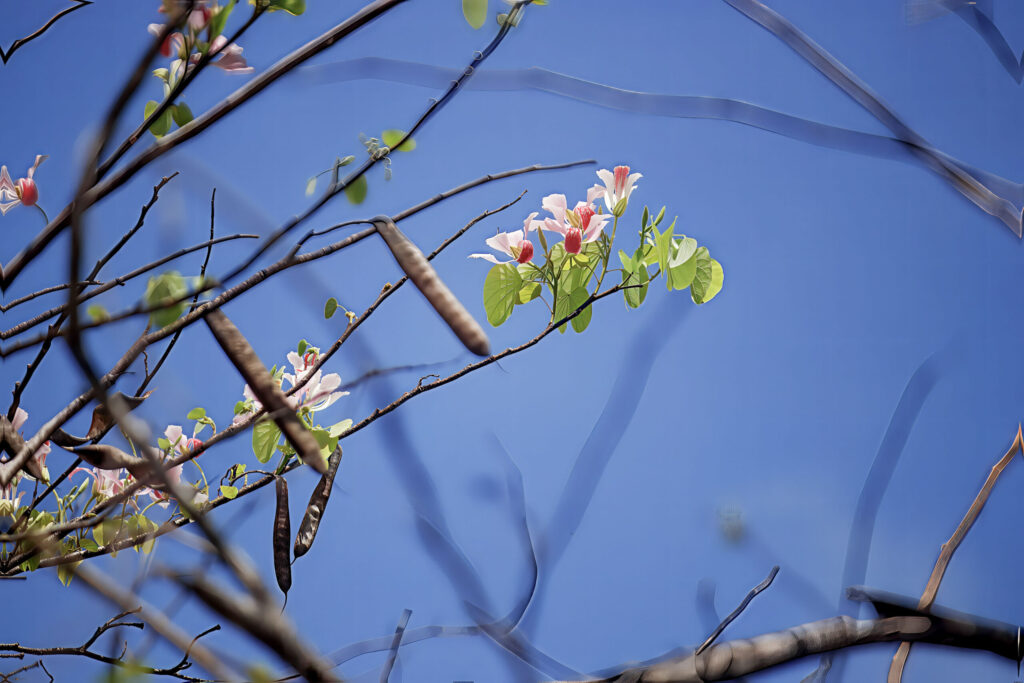
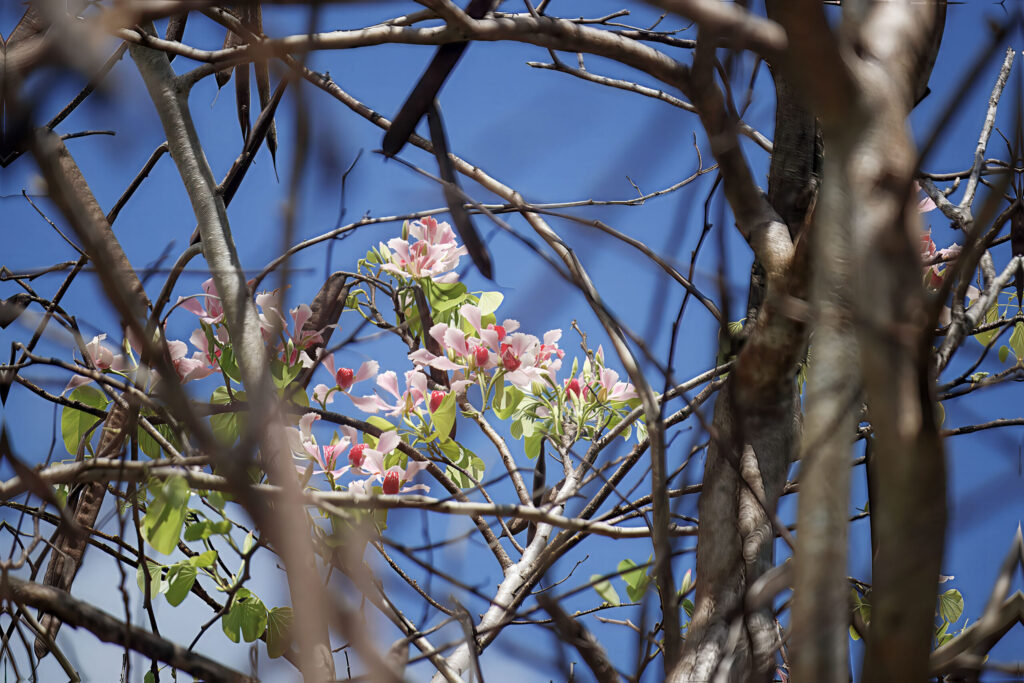











Observations:
Phenological Markers – Bauhinia Tree (Bauhinia variegata)
1. Flowering
The Bauhinia tree is best known for its showy, orchid-like flowers in shades of pink, purple, or white (depending on cultivar).
- Peak flowering typically occurs in the dry season, from January through March in St. Croix.
- Flowers are produced on bare or nearly leafless branches, making them especially prominent.
- Flowering often begins before full leaf flush, creating a striking floral display against the branch structure.
2. Leaf Drop (Deciduous Behavior)
Bauhinia is semi-deciduous to fully deciduous depending on climate and rainfall.
- Trees often shed most of their leaves during the late dry season, especially preceding the main flowering period.
- Leaf drop enhances flower visibility and signals the start of a new phenological cycle.
3. Leaf Flush (New Growth)
After flowering, the tree undergoes a leaf flush with new, bilobed leaves—shaped like butterfly wings or hearts.
- New leaves emerge shortly after flowering ends, usually by mid to late spring.
- Leaf flush is often synchronized and visually lush.
4. Fruiting
Following flowering, long, flat seed pods develop.
- These brown, woody pods mature over several weeks and contain multiple seeds.
- Pod formation begins in the late flowering phase and continues through the early wet season.
- Mature pods may split open and drop seeds in early summer.
5. Seasonal Color or Phenological Cues
While not known for striking color change, the sudden appearance of flowers on bare branches, followed by rapid leaf flush, serves as a strong seasonal indicator.
- The absence of leaves + presence of flowers = mid-dry season.
- The reappearance of leaves + pod formation = early wet season.
